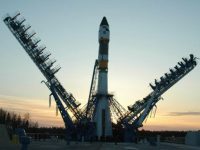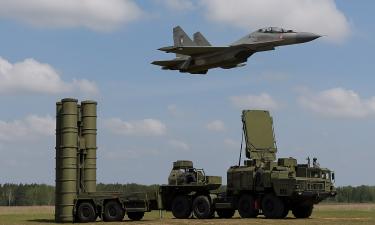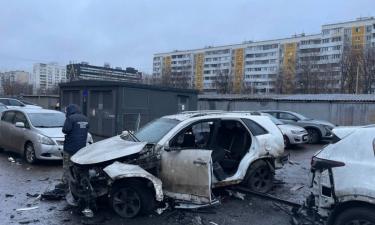Russian space industry recovers from hibernation
In the past year, the Russian space program and related industries seem to have gotten out of the state of economic hibernation. It appears that the industry's stagnation is over, and distant and near prospects have been identified in a recent large-scale meeting near the new cosmodrome in the Far East.

The world is entering the stage of post-industrial informational development. Primitive market "buy-sell" relationships will be replaced by the demand for high-tech products and services, among which the space industry products will be one of the most sought after. Today, the market amounts to $300-400 billion, and by 2030 it could reach $1.5 trillion. Space development can be much more profitable than increasing the exports of energy resources.
Obviously, these considerations were taken into account by the Russian leadership that allocated 181 billion rubles to fund space programs in Russia. This is three times more than in 2008. This allowed getting ahead of the leading space powers by nearly five times in terms of average annual growth in federal funding. Approximately one trillion six hundred million rubles will be allocated for space activities from 2013 to 2020.
Where would this money go? First, the orbital parameters should be restored to the size of those supported by the leading space powers, including the United States and China. This will be done at existing Plesetsk and Baikonur cosmodromes, where infrastructure for launching rockets of middle class "Soyuz-2", "Proton-M", "Zenith" and "Rockot" will be developed.
The next task is to create and launch a space rocket complex of heavy class "Angara" and rebuild new facilities at cosmodrome Vostochny.
We are talking about a radical modernization and renovation of the space technology and the means of delivery. Where would the new missiles fly? First of all, to the near-earth orbit. They will deliver a multi-laboratory module and autonomous free-flying modules to the International Space Station.
In parallel, robotic tools for the study of the moon will be developed, and the moon landing runway complex and inter-orbital tug for manned spacecraft will be created. As emphasized by the Deputy Prime Minister Dmitry Rogozin, this will be done to deploy and begin to operate a permanent scientific base on the Moon, and further implement a manned mission to Mars. For these purposes, heavy rockets with carrying capacity of over 50 tons are required. A mission to Mars will require a launch vehicle capable of moving approximately 180 tons in a vacuum, which is equivalent to three fully loaded railroad cars.
The program of deep space studies, nearly forgotten in the last 15 years, will be revived. Today, there are two spacecraft "Spektr-R" that allow observing the core of galaxies at a distance of 5 to 7 billion light-years. Next year another such machine will be launched into space that will further expand the range of visibility, allowing studies of the so-called black holes.
Another sensation is a breakthrough project to develop transport and energy module based on the nuclear power unit. A nuclear spacecraft was started by Soviet designers and engineers, and their designs are still seven to ten years ahead of similar ones produced by Western scientists. According to the head of Roscosmos Vladimir Popovkin, a nuclear missile will provide a very different capacity and travel speed, which would have revolutionary implications in space science.
Of course, the specific terrestrial tasks of the space industry will not be forgotten. Satellite group "Glonass" is in great demand by transporters, industrialists, and signalers. "Glonass" is inferior to its Western competitors in terms of accuracy, which necessitated the task to raise this indicator to one - three centimeters. The success of the national system will capture a significant segment of the operator services market, estimated at $200 billion.
Another direction is creating bandwidth in the Arctic zone, including the Northern Sea Route and the transpolar route for aircraft.
The period of anarchy in the management of the space industry has come to end. The anarchy was caused by the fact that powerful governmental scientific and production associations that solved world-class problem split into dozens of obscure firms with big names, striving for economic independence. A decision was made to preserve and enhance the role of the Russian Federal Space Agency (Roscosmos) as a federal executive authority. The rocket and space industry will be consolidated into a few large specialized scientific and industrial holdings with one hundred percent government participation. These structures will be controlled by Roscosmos. In fact, the Soviet space control scheme is being reconstituted with two competing basic space holdings in Moscow and Krasnoyarsk.
Will the Russian space program reach the high level of development it enjoyed during the Soviet times? According to the stated objectives, it is feasible. There is another important factor: a program has been established that is worthy of a great power and scale and innovation potential. The space construction that involves hundreds of thousands of citizens in a large scale project may significantly improve the public perception of the world, give a sense of optimism and prospects to the country oppressed by the ideology of consumerism and social Darwinism.
Yuri Skidanov
Pravda.Ru
Subscribe to Pravda.Ru Telegram channel, Facebook, RSS!



